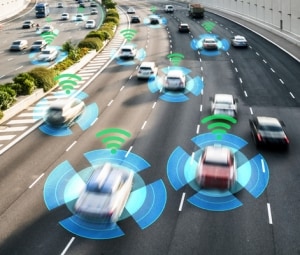You just named off a whole bunch of applications that we are all excited about. We do have a lot of great target markets here. I would say from the TE side, the way that we are approaching these is first, what we do is we improve the precision and the accuracy of the base sense elements. We have a very broad array of products that basically take some measurable element in the environment and turn it into an analog signal, whether that's a pressure signal, a temperature, a position monitor. It could be vibration, it could be an optical or photonic signal. First, we have a whole array of sensing elements that are world class. We have that to begin to base a lot of products on. Next, what we want to do is combine some of those sensors to create even more valuable outputs for our customers. An example there would be to combine a temperature sensor with a pressure sensor in order to create a calibrated output. Most of our customers, when they buy our sensor, they need to have it calibrated to a particular scale or particular precision level so that they understand the range or the dynamic range in which they're operating. Multiple sensors helps to provide an on-board calibration capability that adds value to our customers. That's the second step.
Then the third step where we're headed with TE sensors is to now work in a larger partner ecosystem to fully embody the industrial internet of things. We want to combine our sensing outputs, the calibration that we've talked about, some type of communication, whether it's wired or wireless, and ultimately also machine learning and AI to create models. Earlier I talked a little bit about industrial asset performance, models of asset performance or other performance models that will solve problems for customers. Whether those are industrial pumps or pipelines, transformers. You talked about many of the different applications, but what it’s basically taking a sensor output, creating a digital form of it, perhaps combining it with other sensing elements to create an even, a more complex but more valuable output, and then combining it with communication and machine learning to take those outputs and move them to where the customer can receive them and act upon them. This is the direction we're headed in TE Sensors. We’re all pretty excited about it. I think it's a great opportunity, and I think you're going to hear a lot more from TE in this space in the coming months and years




